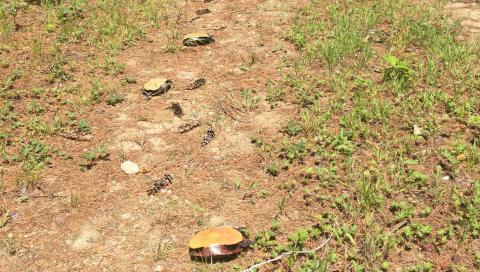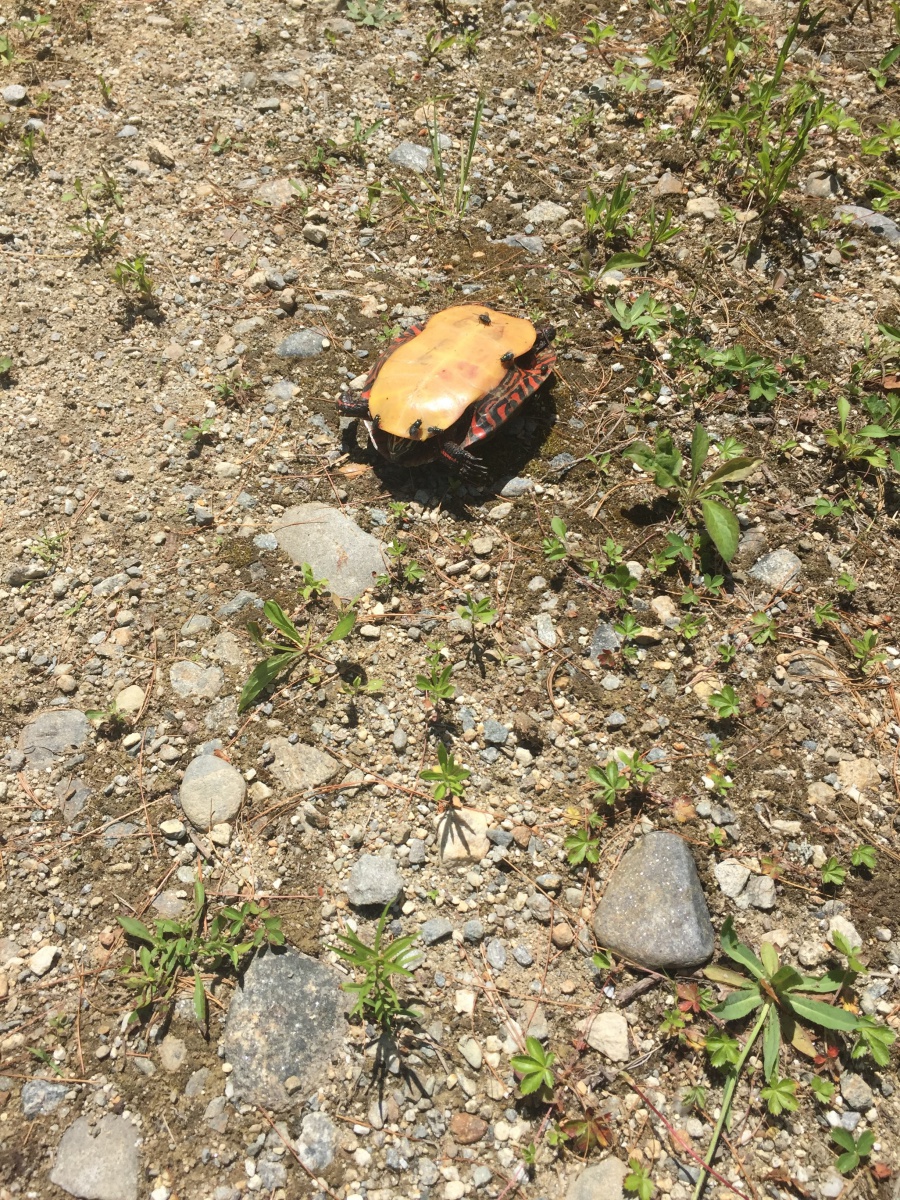Ravens Prove Their Predator Skills

Ethan Belair, Hillsborough County Extension Forester, happened upon a rather odd thing in the woods on a recent visit with a landowner. Read the story below, and beware, you may find it gruesome.
 I was walking in the woods with a landowner in Wilton. Toward the end of our walk, we emerged from a dry pine woods into a sandy area to find a dead painted turtle. We looked it over for a minute, and kept walking out toward the main road. About 50 feet on, we found another dead painted turtle. And another. The dirt road passed through a narrow spit of land bisecting a large wetland area. Over the course of the next 300 yards or so, we found 17 dead painted turtles. The landowner and I were both quite shocked and upset. We assumed there must be something contaminating the area, as none of the turtles seemed to be physically damaged. Their shells, heads and feet were all intact. Thinking they might be useful for chemical testing, I took two turtles as samples and we returned to the landowner’s house.
I was walking in the woods with a landowner in Wilton. Toward the end of our walk, we emerged from a dry pine woods into a sandy area to find a dead painted turtle. We looked it over for a minute, and kept walking out toward the main road. About 50 feet on, we found another dead painted turtle. And another. The dirt road passed through a narrow spit of land bisecting a large wetland area. Over the course of the next 300 yards or so, we found 17 dead painted turtles. The landowner and I were both quite shocked and upset. We assumed there must be something contaminating the area, as none of the turtles seemed to be physically damaged. Their shells, heads and feet were all intact. Thinking they might be useful for chemical testing, I took two turtles as samples and we returned to the landowner’s house.
The next day, on the advice of Matt Tarr (UNH Cooperative Extension Wildlife Specialist), I brought the refrigerated turtles to Mike Marchand at N.H. Fish and Game in Concord. He looked the turtles over, and asked me whether there were ravens in the area. There were in fact a number of ravens around the landing area near the turtles. Mike indicated a small hole in the skin near the turtle’s hind leg. I had assumed this was the result of dried and cracked skin, or maybe post-mortality snacking by small rodents. Mike, however, had heard of an incident in Canada where ravens had learned to specialize in turtles. Apparently, ravens will learn the pattern in timing and location of nesting turtles, then wait for the females to approach their nesting ground. When a turtle enters an exposed location, a raven will fly down and flip the turtle onto its back. It then proceeds to eat the organs and eggs, while leaving the rest of the turtle intact (hence no readily apparent damage), likely all while the turtle is alive.
Given ravens’ intelligence, once a conspiracy (one name for a group of ravens) learns how to predate turtles, they can easily wipe out the population of nesting females in an area. Anecdotally, the landowner I walked with related that a neighbor had found a similar situation on their property.
So essentially, ravens are just re-enforcing their hold on the title “nature’s creepiest bird.”
A wildlife mystery is one of many reasons to contact your county forester. Here are a few more: